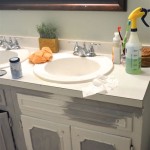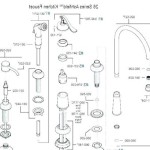How Much Does It Cost To Build A Bathroom With Shower?
Constructing a new bathroom with a shower is a significant home improvement project that can greatly enhance property value and improve the functionality of living spaces. However, understanding the financial implications is crucial for effective budgeting and project planning. The total cost of building a bathroom with a shower is influenced by a multitude of factors, ranging from the size and layout of the space to the materials chosen and the labor required. This article provides a comprehensive overview of the key cost components involved in this type of construction, allowing homeowners to make informed decisions and navigate the process with a clear understanding of potential expenses.
The expense of building a bathroom with a shower is not a static figure; rather, it exists within a wide range dependent on the scope of the project. A basic, functional bathroom with standard fixtures and finishes might fall on the lower end of the cost spectrum, while a luxurious, custom-designed bathroom with high-end materials and intricate features will inevitably command a significantly higher price. This article will explore the variables that contribute to these cost differences, offering insights into how each element impacts the overall budget.
Before delving into specific cost breakdowns, it is important to acknowledge the general ranges often cited for bathroom construction. On average, homeowners can expect to spend anywhere from $5,000 to $35,000 or more to build a new bathroom with a shower. This broad range underscores the importance of detailed planning and accurate cost estimation. Successfully managing a bathroom construction project requires a thorough understanding of individual needs and preferences, as well as a realistic assessment of available financial resources.
Furthermore, the location of the new bathroom within the home can significantly affect the project's cost. Converting an existing space, such as a spare bedroom or a large closet, will generally be less expensive than adding an entirely new addition to the house. Adding square footage often involves more extensive structural work, including foundation construction, exterior wall modifications, and roofing adjustments, all of which contribute substantially to the overall cost.
Key Cost Factors: Materials and Fixtures
One of the most substantial components of bathroom construction costs is the selection of materials and fixtures. These elements encompass a wide array of items, including tiles, flooring, shower enclosures, faucets, toilets, vanities, lighting, and ventilation systems. The quality, design, and brand of these items directly impact the overall project budget. For instance, opting for porcelain tiles instead of natural stone can significantly reduce the cost of flooring and shower walls.
Tiles are a major consideration, as they are typically used for flooring, shower walls, and sometimes even bathroom walls. Ceramic and porcelain tiles are generally more affordable options, while materials like marble, granite, and slate command a higher price. The complexity of the tile installation, such as intricate patterns or custom designs, can also increase labor costs. The size and layout of the tiles themselves contribute to the overall cost, with larger format tiles often requiring fewer grout lines and potentially reducing installation time.
Shower enclosures also present a variety of cost options. Simple shower curtains and rods are the most budget-friendly choice, while glass shower doors and enclosures can range from moderately priced to very expensive, depending on the thickness of the glass, the type of frame (framed or frameless), and any additional features such as water-repellent coatings. Custom-built shower enclosures can further increase costs, particularly if they require specialized glass cutting or unique design elements.
Plumbing fixtures, including faucets, showerheads, and toilets, represent another significant expense. High-end brands and designer models can dramatically increase the overall cost. Water-efficient fixtures, while often carrying a higher upfront price, can lead to long-term savings on water bills. The style and finish of these fixtures also play a role in the price, with brushed nickel and oil-rubbed bronze typically costing more than standard chrome finishes.
Vanities and countertops are central to the aesthetics and functionality of the bathroom. Stock vanities are generally more affordable than custom-built options. Countertop materials range from laminate and solid surface to granite, marble, and quartz, with natural stone and engineered stone options commanding higher prices. The size and complexity of the vanity design, as well as the number of drawers and cabinets, will also affect the overall cost.
Essential additions like lighting and ventilation add cost. Adequate lighting is critical for safety and functionality. Options range from basic overhead lights to recessed lighting, vanity lighting, and accent lighting. Installation of these fixtures will also introduce labor costs. Ventilation is essential for preventing moisture buildup and mold growth. A properly sized exhaust fan is a necessity, and its cost will vary based on its features, such as noise level and automatic humidity sensors.
Labor Costs and Professional Fees
Labor costs constitute a substantial portion of the overall expense of building a bathroom with a shower. These costs encompass the fees charged by contractors, plumbers, electricians, tilers, and other skilled professionals involved in the project. The specific labor costs will depend on the complexity of the project, the geographic location, and the experience and reputation of the professionals involved.
Hiring a general contractor is often recommended for managing the entire bathroom construction project. A general contractor is responsible for coordinating the various tradespeople, managing the project timeline, and ensuring that the work is completed to code and according to the agreed-upon specifications. General contractors typically charge a percentage of the total project cost as their fee, which can range from 10% to 20% or more, depending on the scope and complexity of the project.
Plumbing work is an essential component of bathroom construction, involving the installation of water supply lines, drain lines, and waste pipes. Plumbers charge hourly rates or flat fees for specific tasks. The cost of plumbing work can increase significantly if the project involves relocating existing plumbing lines or installing new ones. Compliance with local plumbing codes is crucial to ensure the safety and functionality of the plumbing system.
Electrical work is another critical aspect of bathroom construction, involving the installation of wiring for lighting, outlets, and ventilation. Electricians are responsible for ensuring that the electrical system meets safety standards and local building codes. The cost of electrical work will depend on the number of fixtures being installed, the complexity of the wiring, and the need for any upgrades to the existing electrical panel. Ground fault circuit interrupter (GFCI) outlets are required in bathrooms to prevent electrical shock.
Tiling is a specialized skill that requires precision and attention to detail. Tilers charge per square foot for tile installation, and the cost will vary depending on the type of tile, the size of the tiles, and the complexity of the pattern. Intricate tile designs and custom layouts will typically increase labor costs.
In addition to the labor costs associated with the tradespeople, professional fees may include architectural design services and permit fees. Architects can help create a functional and aesthetically pleasing bathroom design, while permit fees are required by local building authorities to ensure that the construction project complies with building codes and regulations.
Hidden Costs and Contingency Planning
Beyond the readily apparent expenses of materials, fixtures, and labor, there are numerous potential hidden costs that can significantly impact the overall budget of a bathroom construction project. These hidden costs can arise from unforeseen issues such as structural problems, plumbing or electrical complications, or unexpected material price increases. Prudent contingency planning is essential to mitigate the financial impact of these unexpected events.
One common hidden cost is the discovery of mold or water damage during demolition. If mold is present, professional remediation may be necessary, which can add significant expense to the project. Similarly, hidden water damage can reveal structural issues that require repair before construction can proceed.
Unexpected plumbing or electrical complications can also arise during the project. Old or corroded pipes may need to be replaced, or the existing electrical wiring may not be adequate to support the new bathroom fixtures. These issues can require additional labor and materials, increasing the overall cost.
Material price increases can also impact the budget. Fluctuations in the cost of lumber, tile, or other materials can occur during the project, especially if there are delays in the construction timeline. It is prudent to factor in a buffer for potential price increases when estimating the overall cost.
To address these potential hidden costs, it is advisable to allocate a contingency fund of 10% to 20% of the total project budget. This fund can be used to cover any unexpected expenses that arise during the construction process. Clear communication with the contractor is also essential to ensure that any unforeseen issues are addressed promptly and efficiently.
Furthermore, homeowners must consider the cost of potential disruptions to their living arrangements during the construction process. If the existing bathroom is being renovated, alternative bathing facilities may be necessary. Depending on the extent of the renovation, it may be necessary to rent temporary living space. These additional expenses should be factored into the overall project budget.

How Much Does It Cost To Add A Bathroom 2024 Data

How Much Does A Walk In Shower Cost 2024 Forbes Home

What S The Average Cost To Add A Bathroom Neighborly

How Much Does A Walk In Shower Cost To Install 2024

Cost To Remodel A Shower 2024 Forbes Home

Bathroom Remodeling Costs In Chicago 2024

2024 Shower Remodel Cost Redo Renovate Costs

Cost To Add A Bathroom 2024 Guide Forbes Home

2024 Bathroom Remodel Cost Average Renovation Redo Estimator

How Much Does A Shower Remodel Cost In 2024
Related Posts







